Software must move fast today. Apps need updates often. Bugs must be fixed quickly. That’s why implementing continuous integration and continuous delivery (CI/CD) is essential.
CI/CD handles the hard work. It handles building, testing, and deploying software automatically, making releases quicker and more consistent. By breaking projects into smaller parts and using automation workflows, teams cut errors and speed up delivery. Apps stay in a state of software readiness.
CI/CD is built on three steps. Continuous integration means developers merge code often. Continuous delivery keeps apps ready to release anytime. Continuous deployment pushes updates live with no delay. These steps stop integration hell and help both development teams and operations teams.
It also works great for mobile. With Android continuous integration, updates are smooth across all devices. This keeps apps stable for users everywhere.
CI/CD improves the full app lifecycle. In the integration phase, code changes are tested early. In the testing phase, automation checks quality. In the delivery phase, apps stay launch-ready. In the deployment phase, updates roll out without stress. By adding ongoing automation and continuous monitoring, the software stays reliable.
The CI/CD pipeline is like a factory line for apps. It makes updates faster, safer, and easier. Paired with DevOps and site reliability engineering (SRE), it builds agile software, ensures responsive software, and creates competitive software.
Today, CI/CD is not optional. Users want updates fast. Competitors never slow down. Whether for web apps or mobile with Android CI pipelines, CI/CD keeps apps reliable, quick, and ready to grow.
What is Continuous Integration?
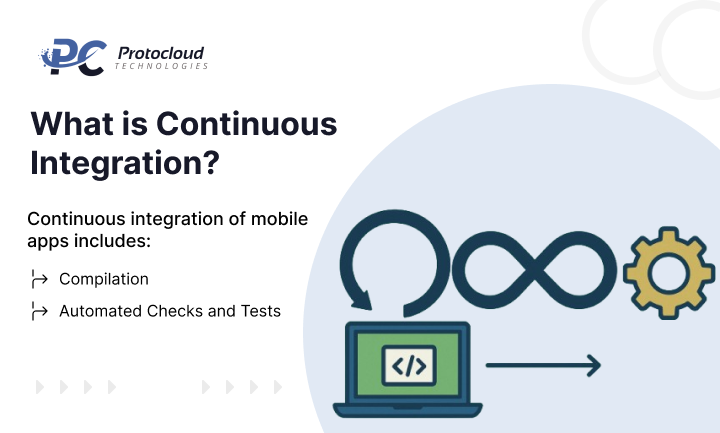
Continuous Integration (CI) is a process in custom mobile app development. It means developers frequently add code changes to a shared code repository. This can happen once or multiple times a day. CI encourages developers to make small, frequent updates rather than big, occasional changes. Small steps are easier to test, fix, and manage.
In a typical development process, developers handle distinct features on separate branches. They merge their work into the main branch with Pull Requests (PRs). Without CI, every commit is slow. Developers must do manual checks, create builds, and run tests. This wastes time. That’s why CI for mobile apps is so helpful.
A CI tool starts a pipeline when a commit or PR happens. It handles building and testing the app. It quickly finds defects and protects code quality. Developers get quicker feedback, fix defects before production, and deliver better software quality. This creates seamless collaboration across the team.
In simple terms,
continuous integration of mobile apps
includes:
- Compilation : Joining new code with source code, libraries, and dependencies to generate the build.
- Automated Checks and Tests : Running unit tests, integration tests, and static analysis. These computerised tests confirm code compatibility and protect app stability.
For Android apps, Android continuous integration (CI make the process faster and safer. They keep apps stable across devices.
What is Continuous Delivery?
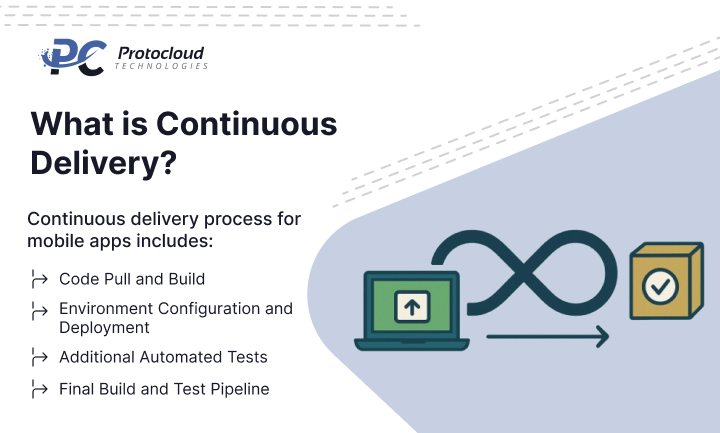
Once code merges into the central branch, Continuous Delivery (CD) begins. CD moves CI-approved builds into staging. In staging, apps go through performance tests, security tests, acceptance tests, and smoke tests. These steps happen in the CD pipeline. They confirm the app is ready for production-like environments.
Continuous delivery of mobile apps reduces deployment risks. It reviews functional code in real-world conditions. The goal is simple: deliver integrated code often and safely. With CD, teams always have green builds ready for a one-click release.
A normal continuous delivery process for mobile apps includes:
- Code Pull and Build : Getting the latest code from the version control branch and creating a build.
- Environment Configuration and Deployment : Setting the code for production-like environments and deploying it.
- Additional Automated Tests : Running extra checks, such as UI tests and performance tests.
- Final Build and Test Pipeline : Sometimes another main branch build and test cycle happens before release.
Benefits of CI/CD Implementation in Mobile Apps
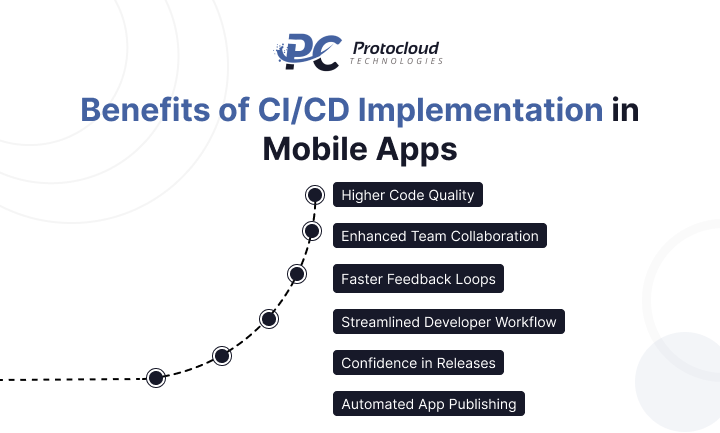
1. Higher Code Quality
With continuous testing and early distribution of app builds, bugs are spotted fast. Fixes happen before public release. This ensures a stable app every time. Using Android continuous integration also helps maintain higher code quality across builds.
2. Enhanced Team Collaboration
Automated build processes ensure the entire team stays aligned .Developers, testers, and stakeholders can check new features and updates instantly. This boosts transparency
and makes teamwork smoother. Tools like
Android CI
make it easier to share builds and updates.
3. Faster Feedback Loops
Frequent build distributions powered by automation mean bugs don’t stay hidden. Teams get quicker feedback, fix issues fast, and keep the development process responsive.
4. Streamlined Developer Workflow
Developers avoid wasting time on manual build configurations. They can focus on writing high-quality code and delivering new features faster. This keeps the workflow simple and productive.
5. Confidence in Releases
Automated builds and testing remove guesswork. Every release is thoroughly checked against quality standards. Teams release with confidence, knowing apps are safe and reliable.
6. Automated App Publishing
Production-ready Android app builds go straight to Google Play and the Apple App Store. This reduces manual work and makes the release process faster. Even though app store approvals prevent full continuous deployment, it streamlines the pipeline by automating the final release steps.
Stages of CI/CD for Mobile App Development
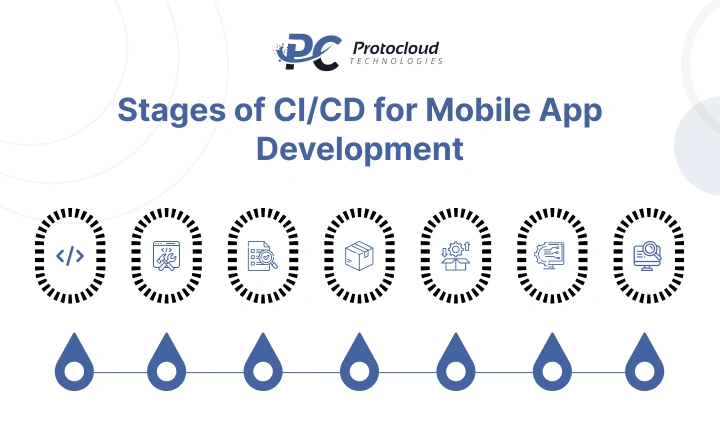
1.Code
Code is the backbone of any application. It starts in the development phase and continues into the maintenance phase.
In Android continuous integration, developers create code for CI components, setting everything up for the next automation stage. This process ensures smooth progress before moving to building and testing.
2.Build
This stage focuses on building the app. Multiple developers contribute daily to improve and update the code.
In CI/CD for mobile apps, once developers finish their part, they add it to the CI application. The output of a stage is a URL, which leads to the next step in the pipeline.
3.Test
After the code components are in the CI platform, testing begins. This stage checks app performance and how well it handles new updates.
The CI software generates reports and helpful analytics. Although automated, it’s still important to involve the mobile app quality assurance team to ensure all updates are acceptable changes.
4.Package
Once performance tests and quality tests are complete, it’s time to deploy the application.
This stage applies to both new apps and existing apps. Whenever a new version is ready, the package step prepares it for release.
5.Release
Once the app is built and tested, it moves on to the release stage. Here, developers apply the new URL to devices.
This makes the updated app version available for users to download and use.
6.Configuration
The configuration stage focuses on the infrastructure. Developers must set up coding tools and management tools to ensure smooth access to the CI platform.
Regular access allows the team to work faster and keep updates consistent.
7.Monitor
Even once the app is live, the work doesn’t stop. You must continue monitoring performance to keep it reliable.
Here, developers ensure that any new code intended to improve the app passes through all CI stages first. This reduces the risk of bugs or problems appearing later.
With Android CI, this monitoring becomes faster and more accurate, giving teams confidence in every update.
CI/CD Best Practices for Mobile Apps
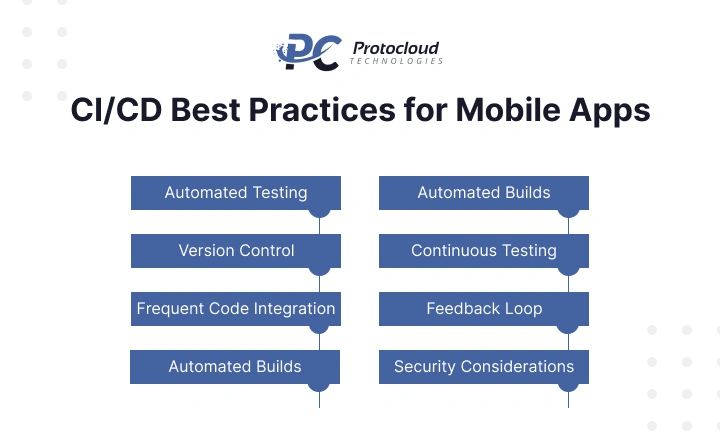
CI/CD best practices for mobile apps are straightforward guidelines to follow. They guide how teams build, test, and deliver mobile applications.
The goal? Make the development cycle and deployment cycle smooth, reliable, and fast. These steps also match your project needs. Let’s break them down.
1.Automated Testing
Start with automated testing. Run it at three levels:
- Unit tests
check small code parts.
- Integration tests
confirm that modules work together.
- UI tests
verify the design and user flow.
These tests identify bugs early. They keep app stability strong with every code change. In Android continuous integration, automated tests protect your app on many devices.
2.Version Control
Always use version control. Tools like Git make it easy to track and manage changes in your source code.
This builds better collaboration. It adds traceability and makes managing app versions easy.
For Android CI, version control ensures smooth teamwork. Everyone works on the same main branch without breaking it.
3.Frequent Code Integration
Use frequent code integration. Developers should merge code changes often into the main branch.
This makes integration smooth and lets developers catch problems early. Minor updates are simpler to fix than large ones.
In Android CI, frequent integration keeps apps stable as new features roll out.
4.Automated Builds
Skip manual work. Go for automated builds. These build processes:
- Compile code
automatically.
- Resolve dependencies
fast.
- Create packages
ready for deployment.
With automated builds, you get consistency. Every build is stable and can be deployed easily. With Android continuous integration, issues in the build are spotted quickly.
5.Continuous Testing
Continuous testing means checking quality at every stage.
After each code change, automated tests are executed. This way, you detect defects fast and avoid costly fixes.
For Android CI, continuous testing ensures apps run well across Android devices.
6.Feedback Loop
Set a clear feedback loop. Include developers, testers, and stakeholders.
Fast feedback means quick fixes. It also keeps everyone aligned.
This speeds up delivery and avoids project delays.
7.Security Considerations
Security matters. Add security checks to your CI/CD pipeline. They catch potential issues early in the development process. Early fixes keep the app safe.
In Android continuous integration, automated scans block risks before release.
Top Mobile CI/CD Tools
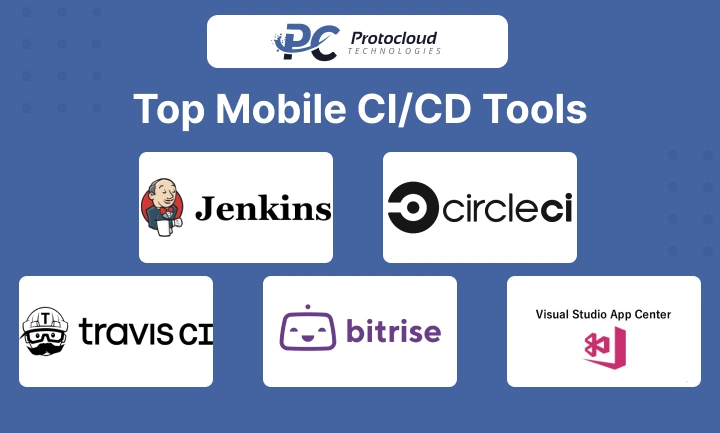
Building mobile apps is fast-paced. Teams need tools that save time and avoid mistakes. That’s where CI/CD tools help. They automate builds, run tests, and deliver apps smoothly.
These tools also play a significant role in Android continuous integration. Developers can focus on features while automation handles repetitive steps.
Let’s look at the top options.
1.Jenkins
Jenkins is the leading open-source continuous integration server. Launched in 2006, it’s trusted by developers worldwide.
With more than 300 plugins, Jenkins adapts to almost any build, test, or automation workload. This approach is suitable for projects big or small. Many teams also use it for Android CI pipelines.
2.CircleCI
CircleCI makes releases faster and safer. From start to finish, everything runs smoothly without manual work. With CircleCI, teams can spot bugs early and fix bugs before they reach customers. It’s also a reliable choice for Android continuous integration.
3.Travis CI
Travis CI is a popular tool for mobile app continuous integration. It’s a hosted service that works directly with GitHub projects.
This distributed service is simple to use. It also supports custom deployment of proprietary versions on client hardware. For teams running Android CI, it brings flexibility and control.
4.Bitrise
Bitrise is designed for mobile app development. This platform makes the entire CI/CD workflow more straightforward to manage. Bitrise lets developers run tests and deploy apps in just a few clicks. It’s mobile-first, making it perfect for Android continuous integration.
5.Visual Studio App Centre
Backed by Microsoft, Visual Studio App Centre combines multiple tools into one integrated product.
It helps teams build, test, deliver, and monitor apps with ease. Each push to the repository creates an installable app package automatically. For developers using Android CI, this tool brings everything together.
Build CI-CD Pipeline in Android using GitHub Actions
Step 1: Open Android Studio.
Step 2: Switch your app file structure to Project mode.
Step 3:Create a new folder and name it . github/workflows
Step 4:Inside the workflows
folder, create a new file for your workflow. Name it
AndroidBuild.yml.
What are GitHub Actions?
It builds, tests, and deploys code without manual work. It is a plugin that comes with every GitHub repository.
This plugin runs tasks you define in a
YAML configuration file.
For example:
-
“Hey GitHub Actions, whenever a PR is opened on X branch, build and test the new changes.”
-
“Whenever code is pushed or merged into the X branch, deploy those changes to the Y server.”
This process is the base of Android continuous integration (Android CI) — automating builds, tests, and deployments.
At its core, GitHub Actions is built on five main concepts:
jobs, workflows, events, actions, and runners.
Job
A job is a single task you ask GitHub Actions to run through the config file.
Examples:
-
Build your source code.
-
Run tests on your code.
-
Deploy the built code to a server.
Jobs are the foundation of Android CI pipelines.
Workflow
It organises tasks in a logical sequence for automation.
-
You can keep build and test jobs in one workflow.
-
You can keep deployment in a separate workflow.
Each config file in .github/workflows is treated as a workflow.
-
For multiple workflows → create various files.
-
For one workflow containing all jobs →
single configuration file.
Event
Events are what trigger a job.
Examples:
-
Run on pull request to master.
-
Run on push to master.
-
Run on merge to master.
You can also schedule jobs. For example, build and test every day at 2 AM.
Or use both events and schedules for the same job.
Actions
Actions are reusable commands.
-
You can use ready-made actions from the GitHub Marketplace.
-
Or you can create custom actions.
They simplify tasks in your Android CI pipeline.
Runner
A runner is the computer where jobs run.
When a job starts:
-
GitHub Actions pulls your code to the runner.
-
The job (build, test, or deploy) executes.
-
If it’s a deployment job, the runner deploys your code to the server.
GitHub provides runners like:
- Ubuntu Linux
- Windows
- macOS
Most Android CI pipelines use the Ubuntu Linux runner.
Let’s make sense of the config file
- name: “Android Build” → The name of your workflow. It shows in the Actions tab.
- On: Defines the events that trigger the workflow. Example: on-push to main branch.
- Jobs: Each job represents a specific task to be executed in the pipeline.
- Runs-on: Defines the runner (Ubuntu Linux, Windows, macOS). We’re using Ubuntu Linux.
- Steps: A job has multiple steps. Each step runs in order. Steps can either:
-
Use an action (uses)
-
Run a shell command (run)
-
Step 5: Push your code
When you push code, GitHub Actions will run checks.
-
If your workflow passes → you’ll see a green check icon.
Step 6: More info
-
To create a new workflow → click on New Workflow.
-
Choose from predefined templates or create your own using Simple Workflow.
-
After clicking
Configure, you’ll see:
- Left side:
Basic workflow example.
- Right side:
Marketplace with actions you can add.
This makes it simple to set up Android continuous integration pipelines with GitHub Actions.
How can Protocloud help you
Understanding CI/CD is crucial for mobile app development. Hiring an app development firm like Protocloud can streamline your development process. Our experts smoothly integrate automated testing, version control, continuous delivery, and Android CI into every stage of your app development.
An efficient CI/CD pipeline ensures apps run smoothly and reach users faster. Automated testing catches bugs early, version control keeps code organised, and continuous delivery enables smooth releases. Using Android CI, we deliver reliable updates quickly, improving code quality and time-to-market.
Protocloud’s experience helps businesses adopt best CI/CD practices for faster, safer, and more efficient mobile app development. We assess your development process, integrate modern CI/CD workflows, and optimise deployment strategies.
Partnering with Protocloud delivers efficient workflows, improved code, and quicker app launches. CI/CD transforms mobile applications, making them more reliable, scalable, and ready for frequent updates.

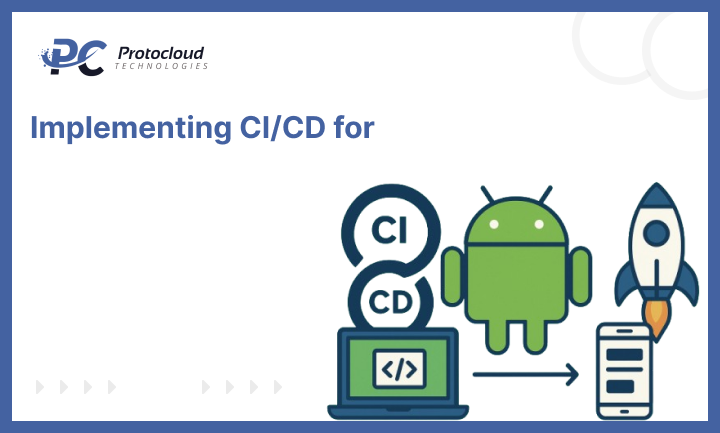



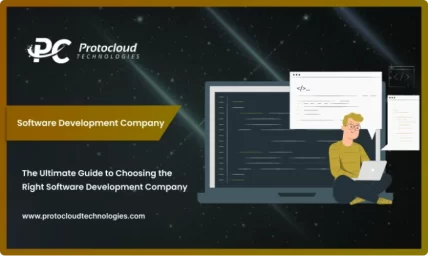





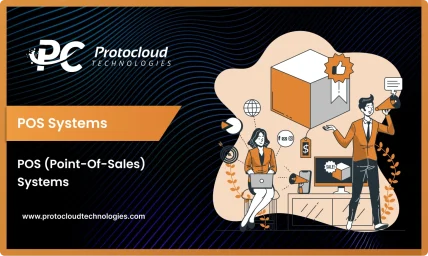
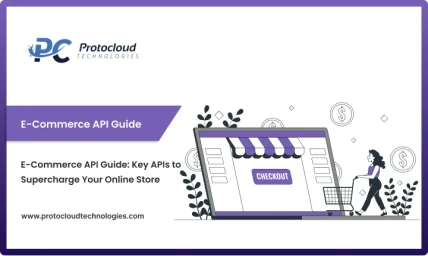
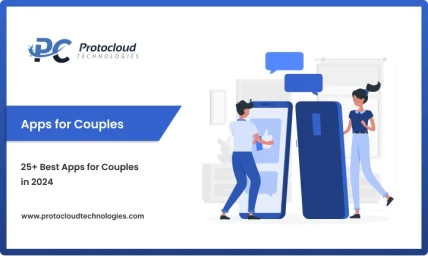


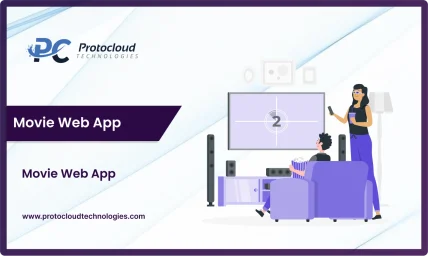

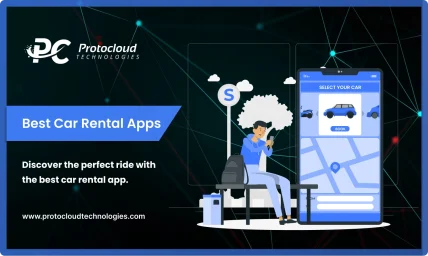

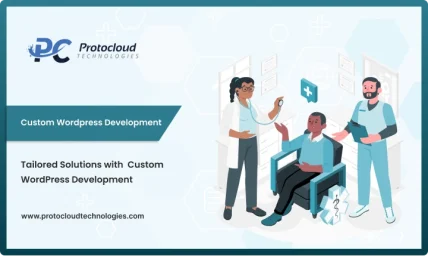
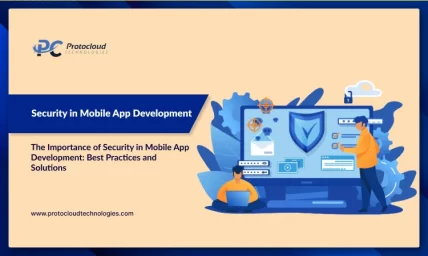

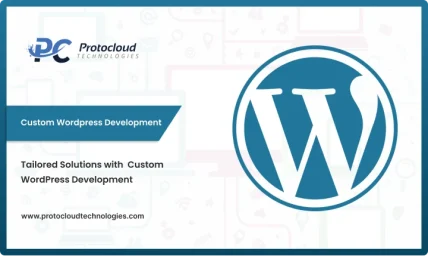

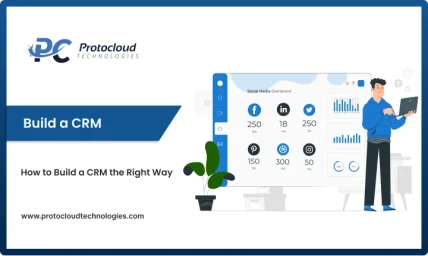

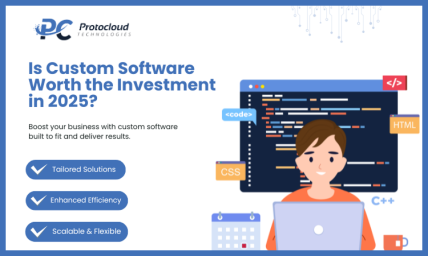
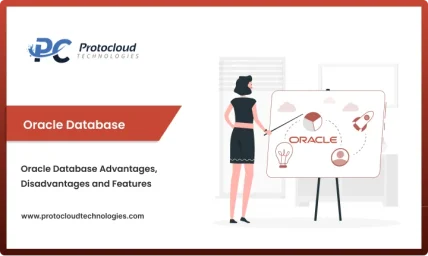

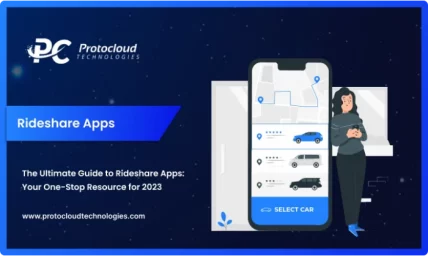
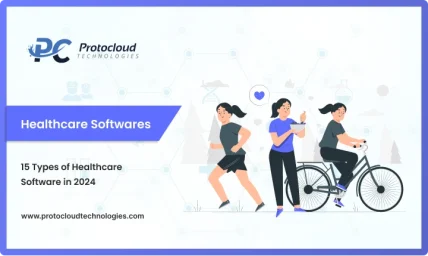


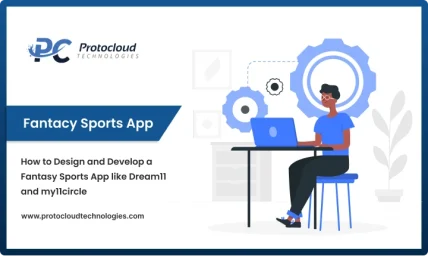


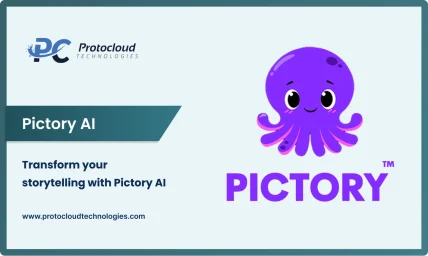
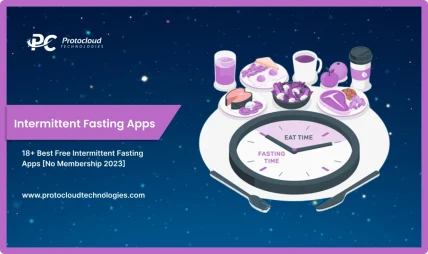
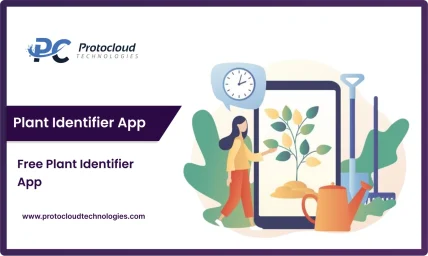
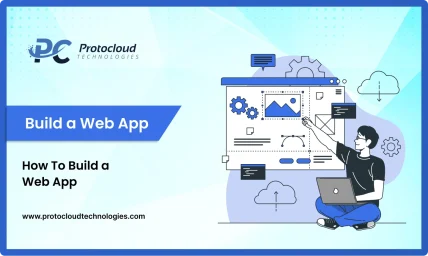

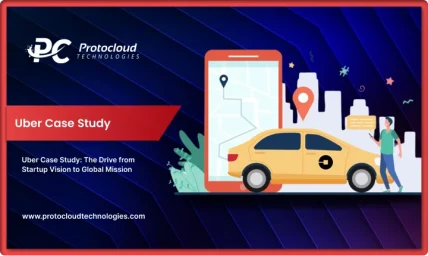
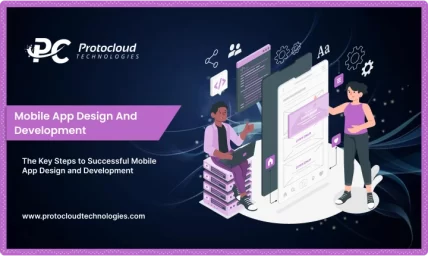

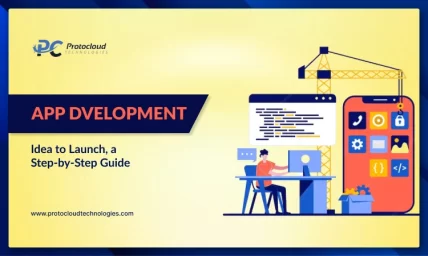

Leave a Reply